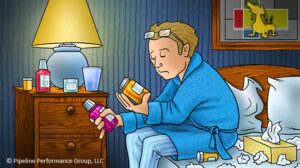An Effective Lessons Learned Program
The Operating Experience section of the Control Room Management (CRM) regulation states, “Include lessons learned from the operator’s experience in the training program.”
- How can a company, not just a control room organization, develop and implement a lessons learned program so that lessons from a “broad range of events” are provided to people, not just controllers, who can benefit from those lessons?
- If a company had a lessons learned program, how would one measure its effectiveness?
My first experience with lessons learned programs in pipeline companies was in 1998. These statements describe what I was supposed to do and what was done:
- Finalize a process, system, and structure for operational data feedback
- Provide root cause analysis training to appropriate personnel
- Develop a process for communicating lessons learned information throughout the organization
- Use it to solicit improvement ideas for preventing spills and errors
- Built a database in 1999 that was used for lessons learned, near miss reporting and performance improvement recommendations
- Updated the database in 2002 to include incident analyses, abnormal operating events, and corrective actions
I retired from the company in 2004, and began my consulting practice. It is rewarding, to know that the company continued to use that same lessons learned application until 2016.
In addition, I worked with people from several other companies in 2002 and presented a proposal to the American Petroleum Institute (API) for a “Recommended Practice for Human Interactions with Lessons Learned Programs for the Pipeline Industry.” Alas, there was no interest at the time. Now API organizes and hosts “Pipeline Information eXchange” (PIX) meetings “to allow for the open exchange of lessons learned from recent pipeline incidents or near miss events.”
I would use the same process today if I was going to develop a program to include lessons learned from operating experience that included reportable accidents, near misses, abnormal operating events, and emergency response events. I would take advantage of updated technology for the database. This would be for organizations that have a desire for operational excellence and not just for regulatory compliance.
Here are some ways to measure effectiveness of a lessons learned program:
- There is a written program description that clearly specifies the technical specifications, the user requirements, and the process.
- The purpose of the program is for lessons from operations, and not for lessons from personnel safety, driving safety, and/or home safety.
- There is senior management commitment and support. They believe in the value of organizational learning as a component of pipeline safety.
- The lessons learned application is user-friendly because it is developed with the end user in mind.
- The end users are controllers, operators, technicians, front line managers, and other front line personnel.
- The end users, and not just people in the safety department, are trained in root cause analysis with particular emphases on the causes of human error.
- The end users use the program for submitting near misses, performance improvement recommendations, and lessons learned.
- There is a process for incident analysis, including corrective actions that assigns the actions to individuals (not groups) with due dates for completion.
- There are measures of the number of lessons learned, near misses, and performance improvement recommendations that are submitted.
- There are mechanisms for regular feedback from the end users on the effectiveness of the program and that feedback is taken seriously.
CONTROL ROOM MANAGEMENT EDUCATIONAL PROGRAM | Charles Alday © 2017 Please Distribute to Others.




